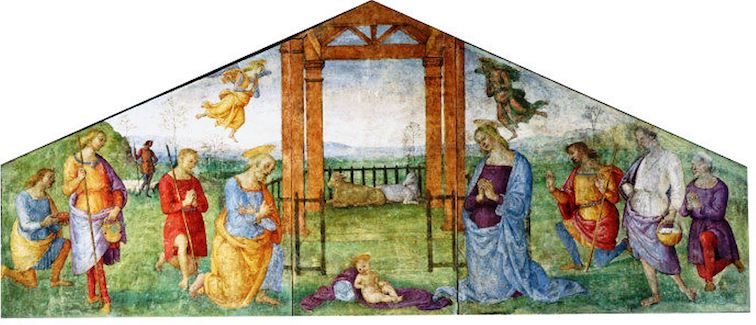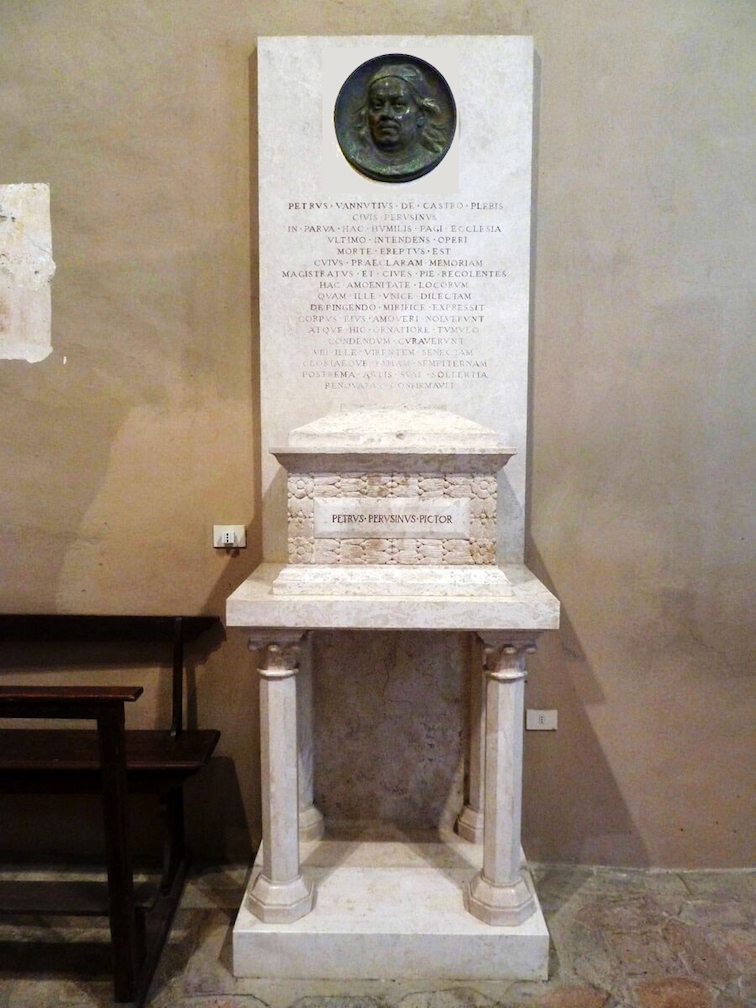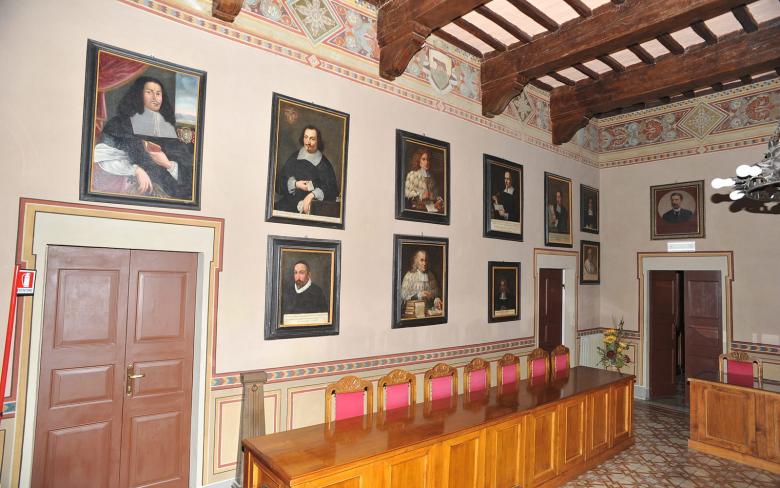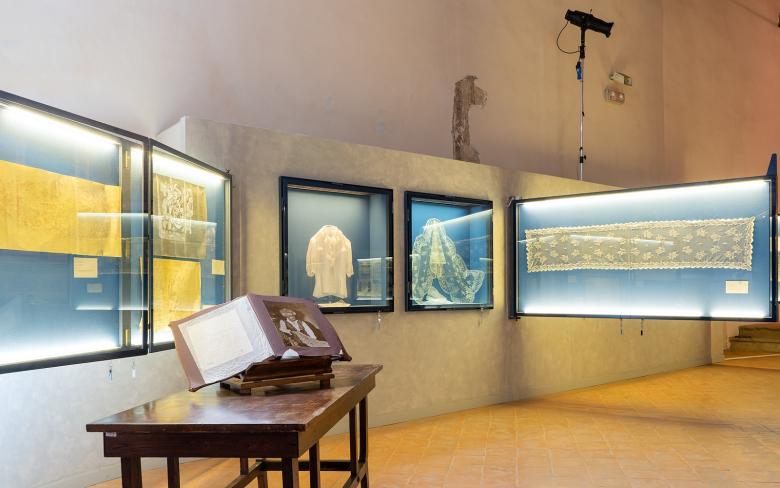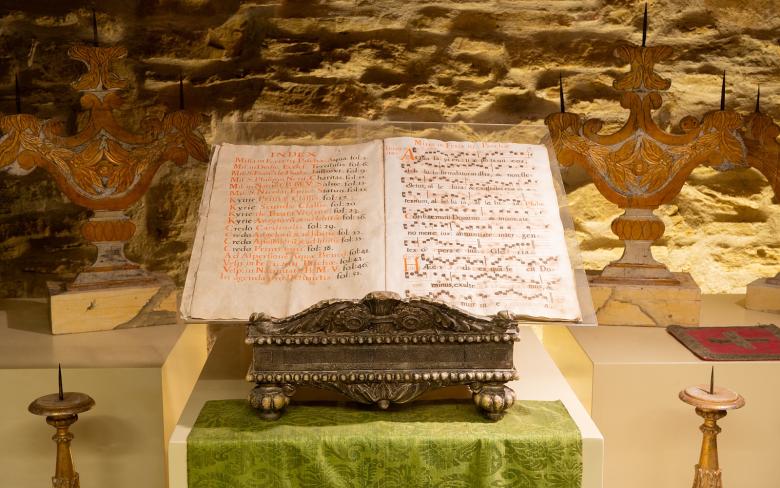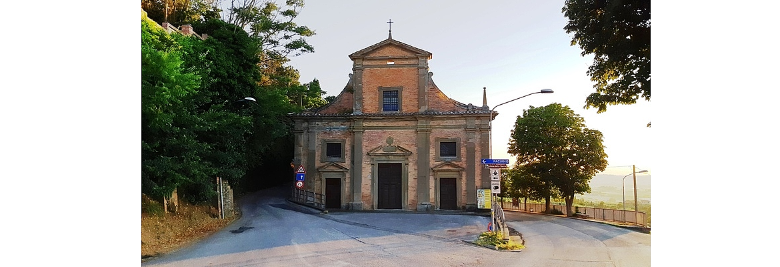Perugino’s tomb in Fontignano
The church of Santa Maria dell'Annunziata is located in the small hamlet of Fontignano in the municipality of Perugia. The church is in Romanesque style with a single nave; it is regarded as the last place of work of Pietro Vannucci, known as Perugino, and houses the tomb of the "divine painter."
The church originally belonged to the confraternity of the Annunziata, which commissioned its decoration in 1521 from Perugino, by then in his seventies. The painter probably frescoed five works: the Madonna and Child (the only remaining fresco) on the right wall, the Adoration of the Shepherds on the gable of the church, a St. Rocco, a St. Sebastian, and another Madonna and Child (now missing).
The Madonna and Child was probably painted from the same cartoon as that used for the church of Santa Maria Maggiore in Spello.
The Virgin's feet rest on a base bearing the name of the donor (ANGNIOLVS TONI ANGELI), and the year in which it was painted, 1522 (FECIT FIERI MDXXII). Agnolo was probably a wealthy local who had commissioned the work as per tradition as a sign of thanksgiving to the Madonna on the occasion of the birth of a male heir; for this reason, the Madonna and Child was one of the most popular themes for private commissions, and Perugino himself made many of them in his lifetime (about eighty). The Virgin here is depicted is massive, seated on a throne, her absent gaze deflected by the Child absorbed in silent contemplation and directed toward the viewer. There is unfortunately almost nothing left on the horizon, but it is plausible to think that there were those very low and gentle hills typical of Umbria that the artist liked so much to depict. Long ago the fresco was covered with a layer of lime, it is not known whether because of the plague (lime disinfected) or because of the poor conditions of preservation.
























.jpg/1d226cc0-49cf-9336-63b1-d36e36b72e0e?width=1920)
